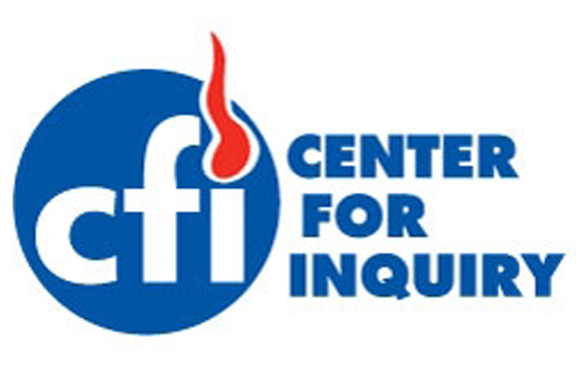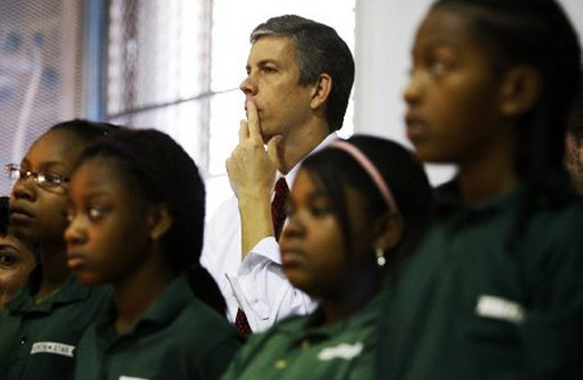Download the fuller report; The School Voucher Crisis. A Position Paper From the Center of Inquiry Office of Public Policy. October 2012
Consider the recent news. In North Carolina headlines read, Private school vouchers at center of House budget debate. In Wisconsin schools chief blasts voucher expansion Wisconsin, the battle over school vouchers also rages on. New Jersey too is in on the action. Governor Christie’s proposed school voucher program is at its latest crossroads. Lest we forget, Bobby Jindal’s School Voucher Funding Ruled Unconstitutional By Louisiana Supreme Court, or the questionable situation in Indiana. Nearly $5 million to be returned to Indiana public schools from voucher program. Some have asked; Are school vouchers losing steam? The evidence would seem to suggest, that whatever changes occur at present, the pendulum is likely to swing again. You might wonder; how did we get here and what can be done to truly turn away from the voucher tradition? Perhaps, we might learn from history.
Background
Beginning in 1607, a diverse collection of people began settling the eastern coast of North America. They came from England, Scotland, Ireland, France, Germany, the Netherlands, Sweden, Africa (under duress) and elsewhere. Among them were Anglicans, Congregationalists (Puritans and Pilgrims), Roman Catholics, Baptists, Methodists, Lutherans, Presbyterians, Jews, Quakers, Mennonites, and Dutch Reformed. Many came for greater religious freedom, although most of the colonies they set up practiced varying degrees of intolerance toward dissenters and generally compelled tax support for religion.
From humble beginnings these disparate people established the most advanced free nation in the world. Central to this process was the development of a nonsectarian public school system and the generally accepted constitutional principle of separation of church and state—of religion and government.
The separation principle, though articulated in the early seventeenth century by Roger Williams, had to wait for Thomas Jefferson, James Madison, and other Virginians to be implemented. In the same year that the Declaration of Independence was signed, the Virginia legislature voted to disestablish the Anglican Church and expand religious freedom. Because they thought this initial step toward disestablishment did not go far enough, Jefferson, Madison, and Baptist and Presbyterian leaders began a drive to completely separate church and state. Their efforts led to the passage in 1786 of Jefferson’s Bill for Establishing Religious Freedom. This Act ended legal compulsion to attend church services and barred tax support for religious institutions. It provided that “no man … shall be enforced, restrained, molested, or burdened in his body or goods, nor shall otherwise suffer on account of his religious opinions or beliefs, but that all men shall be free to profess, and by argument to maintain, their opinions in matters of religion, and that the same shall in no wise diminish, enlarge or affect their civil capacities.”3
4
By the time the First Amendment to the Constitution was adopted in 1791, all the states guaranteed religious liberty to a large degree and only four retained substantial vestiges of religious establishments. As Leo Pfeffer has pointed out, the movement toward separation of church and state began with gradual extensions of religious liberty, then saw single establishments give way to multiple establishments, and ended with the cessation of all tax aid for religious institutions. Pfeffer adds: It is important to note that in no case did the development end until complete disestablishment was arrived at: no state stopped with according freedom of worship, or indeed with less than complete prohibition of tax support of any and all religions.
Moreover, every state that entered the union after the Constitution was adopted incorporated both prohibitions in the constitution or basic laws. In no case was there any attempt to establish any denomination or religion; on the contrary, in varying language but with a single spirit, all states expressly forbade such attempt. This deliberate decision was not motivated by indifference to religion: most of the states had been settled by deeply religious pioneers. Nor was it dictated by purely practical considerations; many of the states had a population far more homogenous religiously than Canada, Holland, or even England. … The decision was in all cases voluntary; and it was made because the unitary principle of separation and freedom was as integral a part of American democracy as republicanism, representative government, and freedom of expression.
Not only did the first thirteen states all follow the example set by Virginia and the First Amendment, but from 1876 onward all new states added to the Union were required by Congress to include in their basic laws an irreversible ordinance guaranteeing religious freedom in accordance with the Establishment and Free Exercise Clauses of the First Amendment.
The constitutions of the two most recent states added to the Union after World War II, Alaska and Hawaii, both contain strong provisions prohibiting diversion of public funds to religious institutions. Furthermore, when Congress considered and approved the constitution for the Commonwealth of Puerto Rico after World War II, that charter not only reiterated the Establishment and Free Exercise Clauses of the First Amendment, but it also included the stipulation that “There shall be complete separation of church and state.” Church-state separation5 is an integral part of America’s heritage, not—as today’s Religious Right would have it—some minor footnote to history to be dismissed lightly.
The Constitution drafted in 1787 proscribed religious tests for public office and provided for an affirmation instead of an oath of office, but it did not otherwise define the relationship between the federal government and religion. The absence of a specific religious freedom guarantee bothered Jefferson and others. Six states ratified the Constitution but insisted on a religious freedom amendment. Rhode Island and North Carolina declined to ratify it until a bill of rights was adopted.
Shortly after his election to the House of Representatives, Madison introduced a compilation of proposals for a bill of rights to be added. Congress considered several versions of a religious liberty provision before adopting the following wording of what is now the First Amendment: “Congress shall make no law respecting an establishment of religion, or prohibiting the free exercise thereof.”
President Jefferson, in a carefully thought-out 1802 letter to the Danbury Baptist Association, declared that these words built a “wall of separation between church and state.” The “no establishment” clause was noted by the Supreme Court as early as 1878 in Reynolds v. U.S., but was best and most succinctly interpreted by the Supreme Court in the 1947 Everson v. Board of Education ruling. The Court stated:
The “establishment of religion” clause of the First Amendment means at least this: Neither a state nor the Federal government can set up a church. Neither can pass laws which aid one religion, aid all religions, or prefer one religion over another. Neither can force nor influence a person to go to or remain away from church against his will or force him to profess a belief or disbelief in any religion.
No person can be punished for entertaining or professing religious beliefs or disbeliefs, for church attendance or non-attendance. No tax in any amount, large or small, can be levied to support any religious activities or institutions, whatever they may be called, or whatever form they may adopt to teach or practice religion. Neither a state nor the Federal government can, openly or secretly, participate in the affairs of any religious organizations or groups and vice versa. In the words of Jefferson, the clause against establishment of religion by law was intended to erect “a wall of separation between church and state.”
References for the Introductory Paragraph…
- Private school vouchers at center of House budget debate, By Lynn Bonner. NewsObserver.com June 12, 2013
- Wisconsin schools chief blasts voucher expansion , By Patrick Simonaitis. Journal Sentinel. June 13, 2013
- Governor Christie’s proposed school voucher program is at its latest crossroads. New Jersey Spotlight. June 3, 2013
- Nearly $5 million to be returned to Indiana public schools from voucher program. Courier Press. May 29, 2013
- Are school vouchers losing steam? By Valerie Strauss. By Abby Rapoport. The Washington Post. May 18, 2013













Leave A Comment